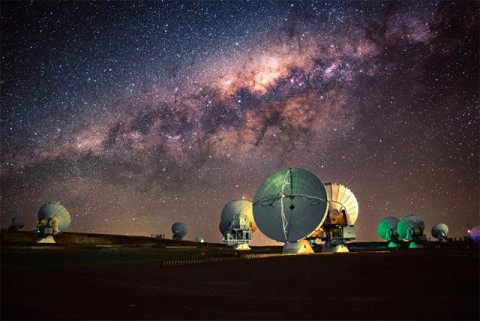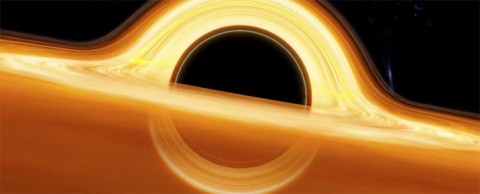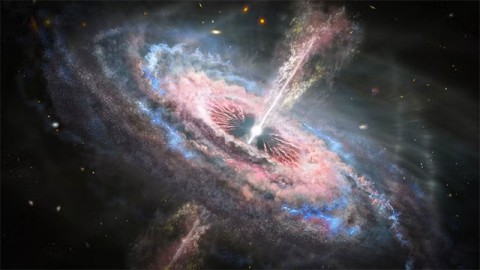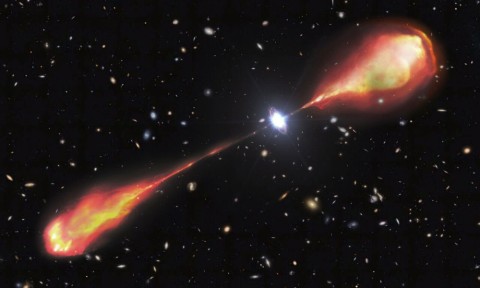Scientists want to launch telescope to study black holes from space

Black holes are among the most extreme yet fascinating objects in the universe.
No one knows what would happen if you fell into a supermassive black hole like the one at the center of the Milky Way. To answer this question, NASA researchers created a simulation using the Discover supercomputer at the NASA Climate Simulation Center that describes what would happen if you fell into a supermassive black hole like the one at the center of the Milky Way .
The black hole at the center of the Milky Way was photographed by the Event Horizon Telescope, showing a doughnut-shaped mass of glowing gas, called an accretion disk, spinning around in the dark void.
The video captures the view as a person falls straight through the accretion disk of glowing gas surrounding a supermassive black hole. The view changes as the person falls, first gliding through the particles of light flying around the black hole, then finally reaching the event horizon, where the sky narrows and the blackness begins to close in, where not even light can escape.
After falling through the event horizon, the observer would be destroyed by gravity in just 12.8 seconds. A few microseconds later, the extremely compressed matter would reach the singularity, the center of the black hole. The journey from the event horizon to the singularity is 128,000 km long, but it happens in the blink of an eye.
It took the researchers five days to render the simulation, using just 0.3% of Discover’s processing power. But if you were to create the simulation on a regular laptop, it would take more than a decade.
Black holes are among the most extreme yet fascinating objects in the universe.
One of the common misconceptions about black holes is that they not only swallow matter, but also the history of that matter. The truth about the history of black holes in the universe has finally been revealed.
Sound waves cannot travel through a vacuum, so there can be no sound in space. However, science can help us hear the universe in many ways.
The universe is truly amazing, partly because of its enormous size, and also because of the mysteries that are beyond human imagination.
Astronomers have discovered a truly ancient monster: a stream of radio waves estimated to be 200,000 light-years wide, thought to have been around since the universe was less than 10 percent of its current age.
Diet is important to our health. Yet most of our meals are lacking in these six important nutrients.
At first glance, AirPods look just like any other true wireless earbuds. But that all changed when a few little-known features were discovered.
In this article, we will guide you how to regain access to your hard drive when it fails. Let's follow along!
Dental floss is a common tool for cleaning teeth, however, not everyone knows how to use it properly. Below are instructions on how to use dental floss to clean teeth effectively.
Building muscle takes time and the right training, but its something anyone can do. Heres how to build muscle, according to experts.
In addition to regular exercise and not smoking, diet is one of the best ways to protect your heart. Here are the best diets for heart health.
The third trimester is often the most difficult time to sleep during pregnancy. Here are some ways to treat insomnia in the third trimester.
There are many ways to lose weight without changing anything in your diet. Here are some scientifically proven automatic weight loss or calorie-burning methods that anyone can use.
Apple has introduced iOS 26 – a major update with a brand new frosted glass design, smarter experiences, and improvements to familiar apps.
Yoga can provide many health benefits, including better sleep. Because yoga can be relaxing and restorative, its a great way to beat insomnia after a busy day.
The flower of the other shore is a unique flower, carrying many unique meanings. So what is the flower of the other shore, is the flower of the other shore real, what is the meaning and legend of the flower of the other shore?
Craving for snacks but afraid of gaining weight? Dont worry, lets explore together many types of weight loss snacks that are high in fiber, low in calories without making you try to starve yourself.
Prioritizing a consistent sleep schedule and evening routine can help improve the quality of your sleep. Heres what you need to know to stop tossing and turning at night.
Adding a printer to Windows 10 is simple, although the process for wired devices will be different than for wireless devices.
You want to have a beautiful, shiny, healthy nail quickly. The simple tips for beautiful nails below will be useful for you.


















